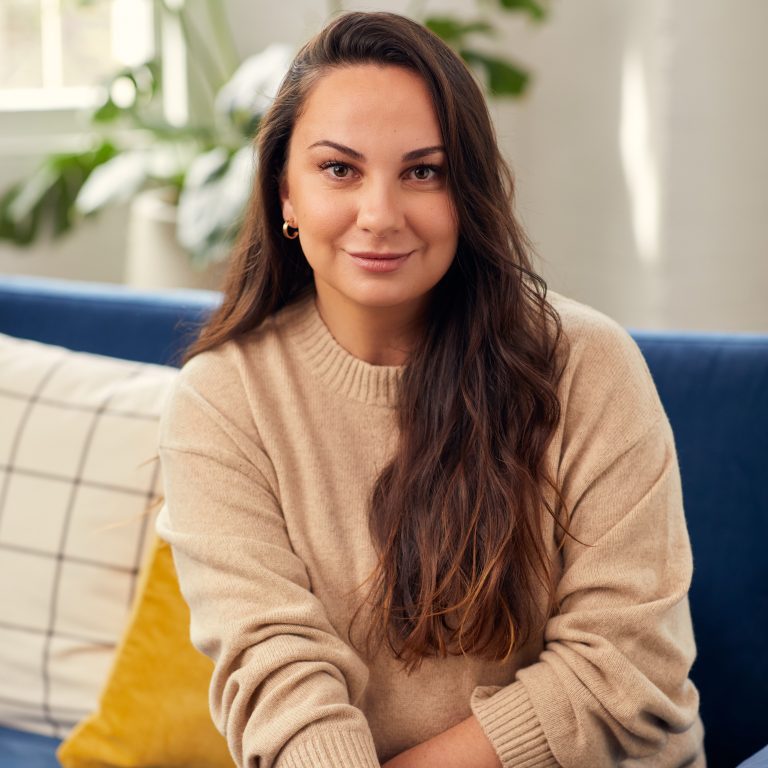Canva: ‘We’re making teams as autonomous as possible’
The design giant’s global head of people shares with UNLEASH how it is managing global teams.
HR Leader Insight
Employee empowerment is top of mind for Canva.
But it doesn't have all the answers, and is on a journey to drive culture change.
Find out then progress to date, as well as plans for the future, in this exclusive UNLEASH interview with the design giant's global head of people.
Founded in 2012, Canva is a graphic design platform based out of Australia. And now, 10 years later, it has opened its first European hub in London.
While Canva’s London office may be new, the global nature of Canva isn’t. Figuring out the best way to work globally, without impacting employee wellbeing and work-life balance, is a top priority for Canva’s global head of people Jennie Rogerson.
Canva’s solution differs from many of its peers. The company has no meeting Wednesdays, something that Rogerson herself implemented while chief of staff to Canva’s CEO and COO, and a sacred lunch hour blocker. But that’s not all.
In an exclusive UNLEASH interview, Rogerson shares that while some teams do have members globally – this is mainly operational roles like HR and finance, or customer-facing roles like sales and marketing so they are “where our customers are” – Canva has tried to ensure that teams that work closely together are in similar time zones.
“What we’re tried to do is build most of our product design engineering talent in Australia”, notes Rogerson.
London, for example, will be the home of Canva’s data visualization team – following the acquisition of Flourish in 2021 – and Rogerson is clear “if you want work on data visualization at Canva, you have to move to London”.
This approach “has been really instrumental in making sure that collaboration can happen in a time zone as much as possible”.
But there is ongoing work to remove the need for the Australian HQ to approve actions, – “we’re trying to make teams as autonomous as possible” and turn them into mini-startups in their own right.

The official opening of Canva’s European hub in London.
The hybrid future at Canva
Yes, to work in data visualization in Canva you have to live in European time zone, but that does not mean that you have to be in the new Canva London office five days a week.
Rogerson shares: “Before COVID-19, we were not hybrid” – but that has all changed now. Hybrid is the future of work at Canva – flexibility and connection are key to the company’s post-pandemic work pivot.
“We don’t mandate people coming back any time per week. If you would like to work from home five days a week, that’s fine, you can do that. If you’d like to work in the office five days a week, also fine”, notes Rogerson.
But Canva has done a lot of work to find fun ways to encourage people back into offices.
“Food is usually the big one – people like to get around the communal table and chat. We also have 400 clubs at Canva – we have things like tennis club, badminton club, Dungeons and Dragons club, Tetris club.”
Employees are welcome to start their own clubs for “literally whatever you’re interested in”.
However, Rogerson emphasizes that Canva’s culture isn’t bound by location – and not all connection, including around club-based activities, has to be in-person.
“I play Tetris, and I play Tetris online, I don’t ever come into the office to do that.” But by being part of the club, “I get to meet people from all around the world who also play Tetris at Canva…I love it”.
“Our office is really like our home” – this explains why huge swathes of Canva’s employees choose to come in – but the most important thing for Rogerson and the Canva leadership team Is that employees “balance that flexibility and connection in the way that works best for you and your family”.
Walking the walk on DEIB
Inclusion really underpins Canva’s hybrid approach.
Rogerson is clear that she (and Canva as a whole) doesn’t have all the answers on diversity, equity, inclusion and belonging (DEIB).
The company is on a journey – and “it’s going to be hard work”, “but that doesn’t mean we shouldn’t do anything”.
“We are starting from that place of always learning”, growing and listening.
But also prioritizing certain areas of DEIB to focus on at one time; “this year the focus is on women in technical roles, women in leadership, neurodiversity and accessibility”.
Rogerson is clear: “Those are heartbreaking discussions to have [about] where you primarily focus your time because it means you can’t focus somewhere else.
“But it does mean that we timebox those things, and we do as much as we can for those communications, and then we look next year of what else if coming through the people pulse” – Canva uses Culture Amp to survey its people twice a year on 20 carefully selected questions.
“We cut that data by different diversity metrics to make sure that we have a real pulse on what’s going on in the organization, and we are then doing something about it”, notes Rogerson.
One of the questions in the survey is ‘I believe action will be taken as a result of this survey’ – “it is one of the most important ones…because no-one wants to be listened to, and not heard”.

Jennie Rogerson, global head of people, Canva.
In terms of other HR tech that Canva uses, the company has actually created a lot of its own workplace tools.
Rogerson is on a mission for her HR team to be “customer zero of our own product”.
“Making sure that our people team and our product teams are so tied together – we are power users, and we can give that feedback to our product teams”.
This, in turn, means that the HR team has a real understanding of the product when recruiting, onboarding, supporting talent mobility of Canva employees.
Driving change beyond Canva
Canva is committed to very publicly sharing what it learns on this DEIB journey with other employers.
The company has also worked hard to ensure its HR policies are open source – examples include a grief and loss guide, and workshops for those laid off to help them with interview skills and CV writing.
Open source is “something that I am really passionate about”.
“I come from startups, and when I joined the first startup, I wanted to do so much for the culture. I wanted to do things for diversity and onboarding, and I had no idea where to start, I just couldn’t find anything anywhere.”
Now, “smaller startups can take that [Canva] template, turn it into its own, put their own branding on it…and then share with the team”, notes Rogerson.
Ultimately, Canva is on a mission to do the most good it can do in the world.
This is why the company provides 250,000 non-profits and 130,000 schools globally with access to its platform for free.
Plus through the Canva Foundation, the company donates 30% of its profits to its charity partners.
Rogerson explains this means “a third of every bit of work that [Canva employees] do automatically go” to the foundation – so individuals at Canva can have a real impact on the wider world.
Want to hear more about the world of work at Canva? Jennie Rogerson will be speaking at UNLEASH World in Paris (17-18 October). Grab your tickets here!

Senior Journalist, UNLEASH
Allie is an experienced business journalist. She is UNLEASH's talent and recruitment lead.
-
Topics
Future of Work
Total EX
Contact Us
"*" indicates required fields
Partner with UNLEASH
"*" indicates required fields
Apply to Contribute
"*" indicates required fields
Webinar Registration
"*" indicates required fields